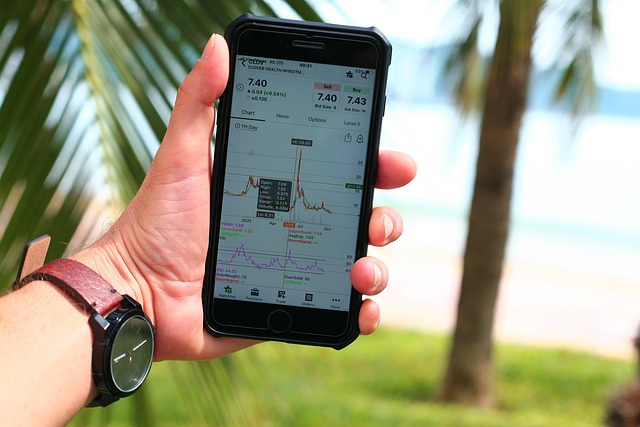Why Chart Analysis Matters in Crypto
At its core, a crypto chart is just data turned visual—usually price and volume over time. What makes it useful is how quickly it shows trends, momentum, volatility, and market psychology. Instead of digging through raw numbers, a chart speaks in patterns: peaks, dips, breakouts, and consolidations. It’s the dashboard of the market, right in front of you.
Trying to trade without charts is like trying to sail a boat blindfolded. Prices shift fast. Trends form and vanish. A chart gives you bearings, letting you spot where the market’s been and where it might be going. Is something climbing slowly or spiking hard? Is it flatlining before a storm? Charts give clues—if you know how to read them.
Then there’s volatility. Crypto doesn’t move like stocks or traditional markets. Swings can be brutal—or rewarding—within minutes. But even chaos has its fingerprints. Patterns emerge that, while not bulletproof, show up often enough to guide solid decisions. Flags during rallies. Head-and-shoulders before dips. Think of it as learning to spot the waves before you ride them.
In short, charts won’t tell the future, but they help you stop guessing. And in crypto, taking fewer blind swings means surviving long enough to get better.
Key Chart Types You Need to Know
Line Charts: Simple but Useful for Spotting Trends
If you’re just getting started, line charts are your entry point. They strip things down to the basics—a single line tracking the closing price over time. There are no extra bells or whistles here, and that’s the point. Line charts help you quickly see the direction of a crypto asset: uptrend, downtrend, or sideways chop. They’re great for identifying broad momentum without getting distracted by short-term noise.
Candlestick Charts: Visual Depth with Price Action Insight
Candlesticks take it further. They pack more data into each time frame—opening price, closing price, highs and lows—which helps you read what’s really happening. A single candle can tell you if buyers or sellers were in control during that time window.
Anatomy of a Candle:
- The “body” shows the open and close.
- The “wicks” or “shadows” extend to the highs and lows.
- Green (or white) candles usually mean the price went up—closed higher than it opened.
- Red (or black) candles mean the price dropped—closed lower than it opened.
Once you get the hang of it, candlesticks reveal patterns that hint at market psychology—reversals, pressure zones, and breakouts.
Volume Charts: Why Volume Matters When Reading Momentum
Volume charts show how much of the asset was traded over a given time period. High volume usually means stronger conviction—more people buying or selling. If you see a price breakout with weak volume, be skeptical. That move might not hold. On the flip side, a trend backed by heavy volume is harder to ignore.
Volume doesn’t just confirm strength—it also signals exhaustion. Spikes can hint at tops or bottoms, especially when paired with candle behavior. If you’re ignoring volume, you’re reading only half the story.
Moving Averages (MA): Smoothing out the chaos Think of moving averages as the uncluttered lens through which to see price action. Instead of staring at every tick, MAs give you the average closing price over a period—clean and simple. Short-term MAs (like the 10-day) react fast, catching quick trends. Long-term ones (like the 200-day) move slowly but show the big-picture direction. When they cross—say, the 50-day rising above the 200—that’s a potential signal. Not a guarantee. A signal.
Relative Strength Index (RSI): Spotting overbought or oversold territory RSI helps you know when a coin is running too hot or too cold. It’s a number between 0 and 100. Over 70? Might be overbought. Under 30? Could be oversold. Doesn’t mean reverse is coming—but caution’s worth dialing in. It’s like checking the temperature before diving in.
MACD (Moving Average Convergence Divergence): Momentum reading without the guesswork MACD looks at momentum shifts. It compares two moving averages and plots their difference. The histogram bars show if the bulls or bears are pressing harder. When the signal line and MACD line cross, it’s often worth paying attention. Again, not psychic—just insightful.
Support and Resistance Levels: Your new best friends for entry and exit points Support is where prices tend to bounce up. Resistance is where they often bounce down. No, they’re not made of steel—but they matter. Watch how prices behave around these levels. They’re great reference points for planning your trade. Know them. Respect them.
Making Sense of Trends and Patterns
In crypto chart analysis, a trend is just the general direction a price is moving over time. You’ve got three types: uptrend (higher highs and higher lows), downtrend (lower highs and lower lows), and sideways (price ping-ponging in a range). Spotting the trend is step one. It tells you what kind of market you’re in—bullish, bearish, or just killing time.
But beyond trends, patterns give a little more texture. These are shapes that price movements form on a chart, and they show up often enough for traders to take them seriously. Head and Shoulders signal possible reversals—essentially, when things could flip from bullish to bearish or vice versa. Triangles usually show consolidation before a breakout, and Flags are those brief pauses in a strong trend that often lead to more movement in the same direction.
Here’s the catch: no pattern is a promise. They’re probabilities, not guarantees. Just because a chart looks like a perfect textbook setup doesn’t mean it’ll play out that way. Smart traders treat patterns as part of a toolkit—not a crystal ball. Keep it tactical. Not mythological.
How Emotions Distort What Charts Say
Charts tell a story, but emotions rewrite it in real time. FOMO (fear of missing out) can push traders to buy high just because a coin is pumping. Panic selling, on the other hand, can drive them to dump their bags at the worst possible moment—usually right before a rebound. Neither is a rational reaction, but both are common. And they often masquerade as “signals” that something big is happening.
The truth? Not every spike or dip is meaningful. Technical indicators can show one thing, but headlines, social media buzz, or a tweet from an influencer can hijack the narrative instantly. It’s easy to misread a chart when your gut is in charge.
New traders need to understand this: charts are tools, not oracles. They give structure to chaos, but they don’t account for human emotion—yours or the market’s. Learning to separate your reactions from the actual data is what separates traders from gamblers.
For a deeper look into how psychology impacts crypto movement, check out The Impact of Market Sentiments on Cryptocurrency Prices.
Smart Habits for New Crypto Traders
Getting into crypto trading? Start small. Don’t dump your savings into a coin just because the chart looks promising. Begin with modest positions, learn how your chosen indicators behave, and only scale up once you’ve developed muscle memory for risk management. Crypto moves fast—your money shouldn’t.
Second, don’t chase candles. That green spike you’re staring at? It might already be too late. Entering trades on emotion or FOMO is a great way to burn capital. Instead, zoom out. Look for consistent patterns, not sudden moves.
Remember: charts are tools, not crystal balls. They show possibilities, not promises. No indicator can predict exactly what will happen next. Think of technical analysis as a resource to guide your decision-making, not dictate it.
And when in doubt? Go back to fundamentals. What’s the project behind the token? Is there actual utility, team credibility, or real-world adoption? Combining chart data with real research keeps your trades grounded in reality—even when the market isn’t.
Wrapping It Up
Charts Are Maps, Not Magic
When you’re new to crypto trading, it’s tempting to believe charts can predict the future. But while they offer valuable insights, they don’t guarantee outcomes. Think of them as maps showing you probable paths—not certainties.
- Charts reveal patterns and probabilities, not promises
- Use them to guide your decisions, not dictate them
The Edge Is in the Basics
Most beginners overlook the fundamentals of reading charts, rushing into more complex strategies too quickly. But mastering basic tools like moving averages, RSI, and trendlines puts you ahead of the majority.
- Learn the core elements before chasing advanced techniques
- A strong foundation builds long-term confidence and clarity
Stay Curious, Stay Cautious
Crypto moves fast—but that doesn’t mean you have to. The best traders take time to analyze, verify, and zoom out. Avoid tunnel vision and look at the bigger picture.
- Never rely on a single data point or pattern
- Always consider broader context: zoom out before acting
- Controlled curiosity and cautious optimism are a trader’s strongest allies
Whether you’re day trading or investing for the long haul, remember: smart chart reading is a skill, not a shortcut. Keep learning, stay grounded, and let the charts guide—not mislead—you.

 Head of Research & Blockchain Insights
Head of Research & Blockchain Insights
